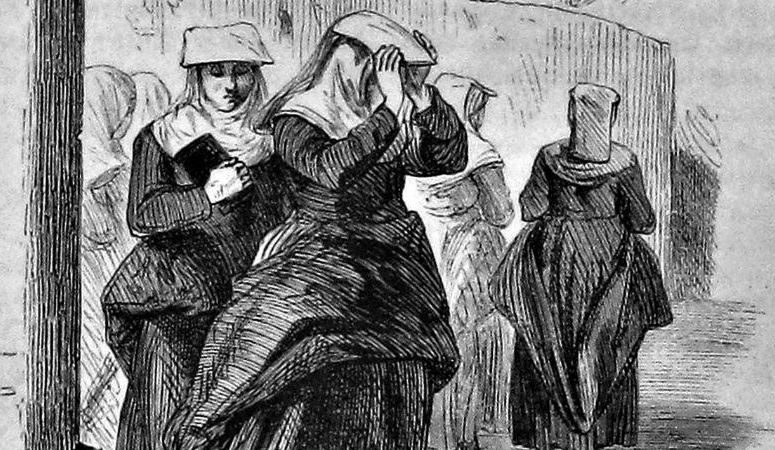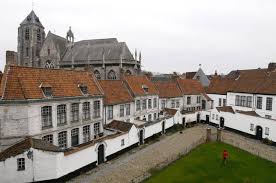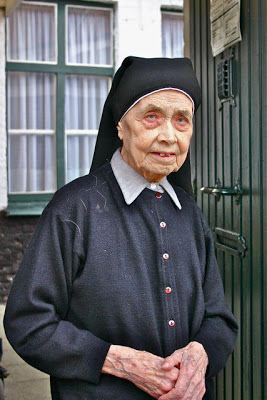Above all, keep fervent in your love for one another, because love covers a multitude of sins. Be hospitable to one another without complaint. As each one has received a special gift, employ it in serving one another as good stewards of the manifold grace of God. Whoever speaks, is to do so as one who is speaking the utterances of God; whoever serves is to do so as one who is serving by the strength which God supplies; so that in all things God may be glorified through Jesus Christ, to whom belongs the glory and dominion forever and ever. Amen. (I Peter 4:8-11)
Medieval Christian women spent their lives using their gifts in service to one another as commanded by Peter in this Scripture. They believed that following Christ meant sharing the Gospel and ministering to the poor as Jesus did.
For some women during the Medieval Age this included a mystical experience. Scholars agree that both the definition and the description of mysticism are difficult to explain. It is not magic or paranormal experience. It does not consist of a preoccupation with special revelations or visions. Religious mystics simply want to be closer to Christ and to experience Him in more than just an intellectual way.
The following four books are just a few of the books that give a general picture of some of the Mystical Saints of the Thirteenth Century. Try to place yourself in their century and imagine what it would have been like to be a Christian living during the time of the Crusades, the Black Plague and a very corrupt Church. Their lives were very different from ours.
I hope you enjoy these books. These women have pretty much been forgotten. It will be fun to meet and talk with them in Heaven!
(Reviews of Medieval mystics from later centuries will follow every few weeks.)
— Perrin, David B., Editor, Women Christian Mystics Speak to Our Times, (Sheed & Ward, Franklin, Wisconsin, 2001).
This book is a collection of essays on Women Christian Mystics written by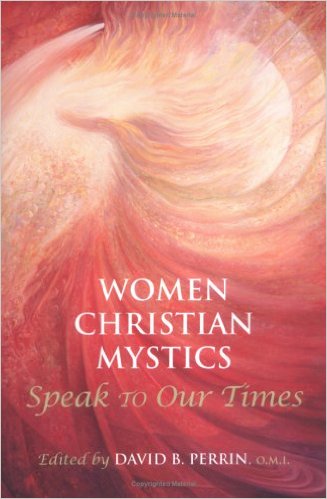 various authors who are experts in the history of women and religion.
various authors who are experts in the history of women and religion.
Part One helps us understand the lives of women in the Medieval Age. There is a very good explanation of mysticism and how it fits into the religion of women in the Middle Ages. Though they lived in a different time, we share the same concerns about following God, life, and our love for the Savior.
Part Two contains brief biographies of Catherine of Siena, Marie D’Oignies, Julian of Norwich, Teresa of Avila, Hildegard of Bingen, Therese of Lisieux, and Elizabeth Ann Seton.
The essays help us to understand the contributions the women saints of the Middle Ages made to the church. We have much to learn from them. Many of the issues they dealt with are still relevant today. We all need to know how to serve God best. Our practices today may be different, but our call to serve by loving God and others is the same.
— Swan Laura., The Wisdom of the Beguines: The Forgotten Story of a Medieval Women’s Movement, (BlueBridge, Katonah, New York, 2014).
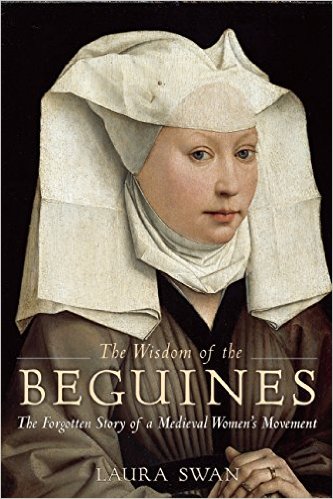 This was one of the most interesting books I have ever read. The Beguines were groups of devout women who began forming over 800 years ago (12th Century) in the Low Countries and spread across Europe. They were not nuns but groups of women committed to living and worshipping and working together to follow Christ by deepening their own faith and serving the poor. The Beguines did not take vows but made their own rules. They were all encouraged to read and study. They were expected to support themselves. Some came with rich inheritances that they shared with everyone. Others learned trades, especially in the cloth industry.
This was one of the most interesting books I have ever read. The Beguines were groups of devout women who began forming over 800 years ago (12th Century) in the Low Countries and spread across Europe. They were not nuns but groups of women committed to living and worshipping and working together to follow Christ by deepening their own faith and serving the poor. The Beguines did not take vows but made their own rules. They were all encouraged to read and study. They were expected to support themselves. Some came with rich inheritances that they shared with everyone. Others learned trades, especially in the cloth industry.
Beguines came from every social class – nobility and aristocrats, middle class and merchants, widows, daughters of knights, urban poor and rural poor. They spanned all ages, fourteen to eighties or beyond. They were self-supporting and independent.
If I wanted to devote my life to Christ by joining a service group of women, this would have been my ideal.
The Beguines left us a great legacy. We have preserved for us beautiful art work, songs, poetry, and writing. Most of all the Beguines gave us an example of serving Christ by helping the poor and marginalized. They showed wisdom, courage, and strength as they worshiped God as they felt called. They would have been great in any century!
— Dreyer, Elizabeth A., Accidental Theologians: Four Women Who Shaped Christianity, (Franciscan Media, Cincinnati, Ohio, 2014).
Not all of us are called to be “theologians”, yet as Christians we all do theology. Theology is just the study of God. We learn about God every time we read our Bibles. When we try to make sense of it or summarize it, we are doing theology.
theology. Theology is just the study of God. We learn about God every time we read our Bibles. When we try to make sense of it or summarize it, we are doing theology.
Four women have been made “Doctors of the Church” by the Roman Catholic Church because they made significant contributions to the church. They are – Hildegard of Bingen, Catherine of Siena, Teresa of Avila, and Therese of Lisieux. The church has finally recognized these women for their work by given them the accreditation they deserve.
As Protestants we may have some differences of opinion regarding ecclesiology, but let us remember that these women were products of their cultures and circumstances. In the main, we can still learn much from them. I would submit though that even Protestants can appreciate the theology of these saintly women. The women based the greater part of their theology on the Scriptures.
One of the most important things is that they lived out their beliefs. They are good examples to us of how to love and serve Jesus by loving and serving others.
As I read this book I was glad that the church has finally decided to give credit where it is due, not matter the gender, and I hope more recognition of women will follow in the years to come.
— Foligno, Angela., The Complete Works of Angela of Foligno, (Paulist Press, New York, New York, 1993).
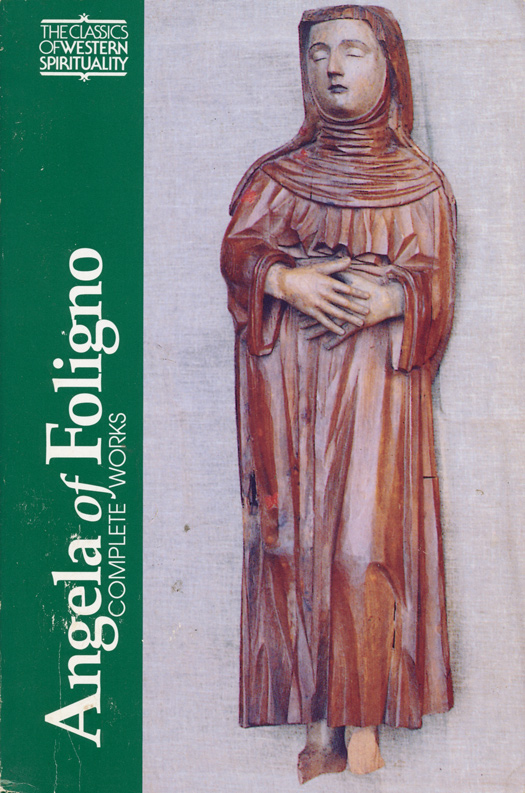 We do not have very many details of Angela’s life outside of her writings. We know that she was born to a prominent family in Foligno, a few miles from Assisi. Her father died when she was young. She was rich, proud, beautiful, and educated. She lived for worldly pleasures until her conversion in 1285 when she was thirty-seven years old.
We do not have very many details of Angela’s life outside of her writings. We know that she was born to a prominent family in Foligno, a few miles from Assisi. Her father died when she was young. She was rich, proud, beautiful, and educated. She lived for worldly pleasures until her conversion in 1285 when she was thirty-seven years old.
Angela decided to only work among the poor and she sought out a way to do that. In 1291 the Franciscans of San Francesco’s in Foligno permitted her to take the habit and make her profession in the Third Order of St. Francis.
After a pilgrimage to Assisi, Angela returned home to begin her spiritual journey. This was described in Angela’s book. The first part of the book is the Memorial, Angela’s inner spiritual journey. The second part of her book, Instructions, gives us glimpses of her life as a spiritual mother.
This book published by the Paulist Press was translated into English by Paul LaChance, O.F.M. It contains a background study and brief biography of Angela in the fifty-page Introduction. The text follows of the two parts of the book and is very interesting to read.
Angela cared for the poor until her death in 1309.
Like many other Christian Mystics in her day she shared the common characteristic of love for the poor. Most of these women were born into wealth but gave it all away. They were all touched by the life of St. Francis and desired to follow in the footsteps of Jesus as Francis did. Truly they obeyed Jesus’ when He said, “If you wish to be complete, go and sell your possessions and give to the poor, and you will have treasure in heaven; and come, follow Me.” (Matthew 19:21)
